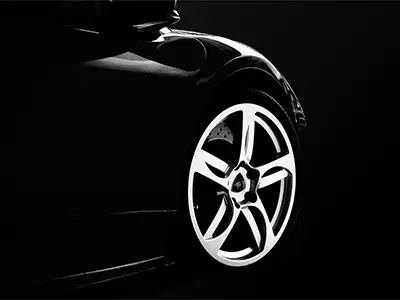
The Ukrainian parliament is considering a legislative initiative that could significantly increase the financial liability of drivers for operating vehicles with unserviceable or worn tires. Bill No. 11029, which proposes not just a symbolic increase in fines, but a multiple increase, is intended, according to its authors, to have a dramatic impact on road safety during the autumn and winter months, and beyond. While drivers can currently get away with a fine of 340 to 680 hryvnias for a first-time traffic violation, in the future, their wallet could be emptied by 1,700 hryvnias. Repeat violations within a year could result in a significantly higher fine, reaching 8,500 hryvnias—comparable to the cost of a new set of high-quality tires.
Current traffic regulations do not contain rigidly fixed deadlines for changing summer tires to winter ones, allowing drivers a certain degree of freedom of choice. However, this freedom is limited by the strict requirement of Section 31.4.5 of the Road Traffic Regulations, which obliges drivers to ensure that tires are suitable for road conditions. This requirement conceals the obligation to monitor the remaining tread depth, which for passenger cars must not be less than the legal minimum of 1.6 millimeters, as well as the overall technical condition of the tires, excluding deep cuts, cord delamination, and so-called hernias, which indicate structural damage to the carcass.
According to the official version, the reason for such a radical increase in penalties is a desire to improve the overall level of road safety in the country, since worn tires are not an abstract administrative violation but create very real risks for all road users. A car with bald tires dramatically loses traction, which is especially critical in rain, ice, or slush, when braking distances increase several times and the likelihood of uncontrolled skidding becomes almost 100% even at low speeds, as regularly confirmed by grim accident statistics.
In practice, patrol officers rarely stop vehicles solely for the purpose of visually inspecting tire condition. However, if a vehicle is stopped for any other violation, such as speeding or an improper maneuver, and the officer notices critically worn tires, a citation is inevitable. Even more serious consequences arise in the event of a traffic accident, where a technical examination may determine that poor tire condition was a key factor in the accident, which will affect the determination of the degree of fault and lead to additional penalties.
To avoid trouble and unnecessary financial expenses, every driver should regularly monitor the condition of their tires, using a special measuring tool or even improvised means like a coin to check the tread depth. It's important to remember that tires have a shelf life and age even with minimal mileage, losing elasticity and developing microcracks after five to seven years of use, making them potentially dangerous regardless of tread depth. Therefore, timely replacement of worn tires is no longer a matter of saving money but a conscious investment in your own safety and the safety of others, especially in light of upcoming legislative changes.

